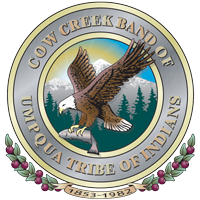BLM Ruling Opens Doors for Tribal Land Stewardship
The Biden administration approved a new Bureau of Land Management (BLM) rule that encouraged co-stewardship opportunities for land management with Tribes in June. In the Public Lands Rule, conservation was declared to be a valid use of land, whereas previously only recreation, grazing, and development of oil and gas resources were valid.
This ruling also made a standard method for nominating areas of critical environmental concern (ACEC), a very flexible definition that could aid Tribes in protecting culturally-relevant subsistence sites in around 245 million acres of BLM-owned land.
“If we’re focused, as the Public Lands Rule is, on ecosystem resilience and having healthy public lands that everybody can use for future generations; Tribes have known how to do that since time immemorial,” said BLM Principal Deputy Director Nada Wolff Culver in an interview with High Country News. “If we are working with them and learning from them, then we’re going to do a better job.”
The process of declaring an ACEC not only allows Tribes to suggest lands to be designated as such, but will encourage Tribes to showcase traditional knowledge of land management and suggest co-stewardship or co-management agreements.
According to Martin Nie, professor of natural resource policy at the University of Montana, ACECs are “just really one of the best tools in all of BLM law and regulation to protect tribal rights and interests on public lands.”
Since the initial co-stewardship direction issued by the Biden Administration in 2021, many strides forward have been made. The Cow Creek Band of Umpqua Tribe of Indians (CCBUTI) have been working with federal agencies to establish co-stewardship agreements for BLM lands that border those owned by the Tribe.
Jason Robison, CCBUTI Lands and Resources Officer, is enthusiastic about these developments, and what they mean for the future.
“We’re actually designing projects that have Tribal knowledge incorporated into those projects, and that’s a huge benefit to the Tribe,” says Robison, “because as the Tribe lost their land and resources, and the federal agencies are now managing those resources, Tribes now have an ability to go back and partner with the agencies to manage those homelands that were so important to the Tribe.”
Robison is also encouraged by the Public Lands Rule, as the fact that embedding it in a federal rule can protect the ruling from any changes in department policy that often shift during new administrations. There is still room for improvement, according to Robison, as there are still questions about the implementation of the Public Lands Rule.
“What does that active management look like?” Robison asked. “And it’s not the agencies that define that; it’s the Tribes that should define that.”
Though the ruling is a big step forward, much of the effectiveness will depend on BLM staff, as they have final say on the designation of ACECs. Monte Mills, professor and director of the Native American Law Center at the University of Washington School of Law, said “The extent that the agency really takes that to
heart and implements and effectuates actual co-stewardship according to the rule, I think that remains to be seen.”
Despite the dependency on the internal culture of the BLM, the agency has shown willingness to participate, as they have been training staff at all levels of the BLM in co-stewardship, treaties, federal Native American law, and Indigenous knowledge, according to BLM National Tribal Liaison Officer Nicole Hanna.





